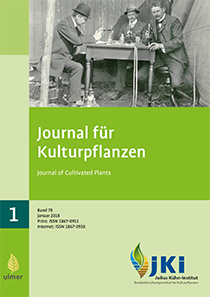Survey on application of chemical pesticides in hops
DOI:
https://doi.org/10.5073/JfK.2018.01.03Keywords:
Plant protection, statistical survey, treatment index, PAPA, hopsAbstract
Surveys of the application of plant protection products (PPP) in hops have been carried out since 2001 (NEPTUN projects). Since 2011, they have been continued under different legislative frameworks as PAPA surveys. PAPA stands for panel pesticide applications. A number of crop-specific networks of farms have been created, in which the PPP application data are recorded annually in detail. The data are forwarded in an anonymised form to the Julius Kühn-Institut (JKI).
All surveys and analyses relate to the Federal Republic of Germany, although almost all panel farms belong to the Hallertau region. This region comprises approximately 85% of the hop cultivation area in Germany.
The results of the surveys show that the frequency and intensity of plant protection measures in hops are subject to annual fluctuations. Different weather conditions during the growing period of the hops have different effects on the occurrence of pests and, thus, on the action taken to keep plants healthy. Therefore, a sustainable reduction in chemical plant protection intensity is not expected in the coming years. On the contrary, the increasing selectivity of active substances promotes the occurrence of new or rare pests (e.g. rosy rustic, flee beetle). This is associated with an expected lower availability of active substances (especially insecticides) combined with an increased resistance risk making an effective resistance management impossible. This probably leads to additional applications of chemical plant protection products to be able to produce hops in sufficient quantity and market-oriented quality.
Downloads
Published
Issue
Section
License
The content of the journal is licensed under the Creative Commons Attribution 4.0 License. Any user is free to share and adapt (remix, transform, build upon) the content as long as the original publication is attributed (authors, title, year, journal, issue, pages).
The copyright of the published work remains with the authors. The authors grant the Journal of Cultivated Plants, the Julius Kühn-Institut and the OpenAgrar repository the non-exclusive right to distribute and exploit the work.







